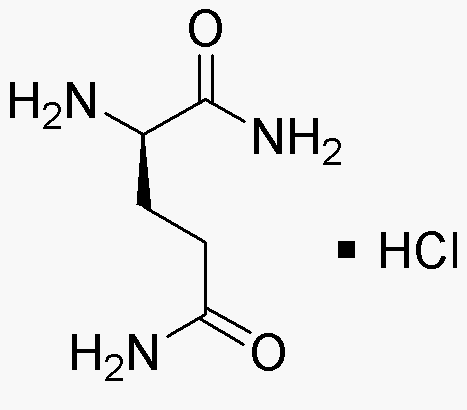D-Glutamine a-amide hydrochloride is widely utilized in research focused on:
- Cell Culture: This compound serves as a vital nutrient for cell cultures, enhancing cell growth and viability, particularly in the production of biopharmaceuticals.
- Neuroscience Research: It plays a role in neurotransmitter synthesis, making it valuable for studies related to brain function and neurodegenerative diseases.
- Sports Nutrition: Used in supplements, it aids in muscle recovery and reduces exercise-induced fatigue, appealing to athletes and fitness enthusiasts.
- Pharmaceutical Formulations: It is incorporated into various drug formulations to improve stability and bioavailability, benefiting the pharmaceutical industry.
- Metabolic Studies: Researchers utilize it to investigate metabolic pathways and energy production, providing insights into metabolic disorders.
General Information
Properties
Safety and Regulations
Applications
D-Glutamine a-amide hydrochloride is widely utilized in research focused on:
- Cell Culture: This compound serves as a vital nutrient for cell cultures, enhancing cell growth and viability, particularly in the production of biopharmaceuticals.
- Neuroscience Research: It plays a role in neurotransmitter synthesis, making it valuable for studies related to brain function and neurodegenerative diseases.
- Sports Nutrition: Used in supplements, it aids in muscle recovery and reduces exercise-induced fatigue, appealing to athletes and fitness enthusiasts.
- Pharmaceutical Formulations: It is incorporated into various drug formulations to improve stability and bioavailability, benefiting the pharmaceutical industry.
- Metabolic Studies: Researchers utilize it to investigate metabolic pathways and energy production, providing insights into metabolic disorders.
Documents
Safety Data Sheets (SDS)
The SDS provides comprehensive safety information on handling, storage, and disposal of the product.
Product Specification (PS)
The PS provides a comprehensive breakdown of the product’s properties, including chemical composition, physical state, purity, and storage requirements. It also details acceptable quality ranges and the product's intended applications.
Certificates of Analysis (COA)
Search for Certificates of Analysis (COA) by entering the products Lot Number. Lot and Batch Numbers can be found on a product’s label following the words ‘Lot’ or ‘Batch’.
*Catalog Number
*Lot Number
Certificates Of Origin (COO)
This COO confirms the country where the product was manufactured, and also details the materials and components used in it and whether it is derived from natural, synthetic, or other specific sources. This certificate may be required for customs, trade, and regulatory compliance.
*Catalog Number
*Lot Number
Safety Data Sheets (SDS)
The SDS provides comprehensive safety information on handling, storage, and disposal of the product.
DownloadProduct Specification (PS)
The PS provides a comprehensive breakdown of the product’s properties, including chemical composition, physical state, purity, and storage requirements. It also details acceptable quality ranges and the product's intended applications.
DownloadCertificates of Analysis (COA)
Search for Certificates of Analysis (COA) by entering the products Lot Number. Lot and Batch Numbers can be found on a product’s label following the words ‘Lot’ or ‘Batch’.
*Catalog Number
*Lot Number
Certificates Of Origin (COO)
This COO confirms the country where the product was manufactured, and also details the materials and components used in it and whether it is derived from natural, synthetic, or other specific sources. This certificate may be required for customs, trade, and regulatory compliance.


